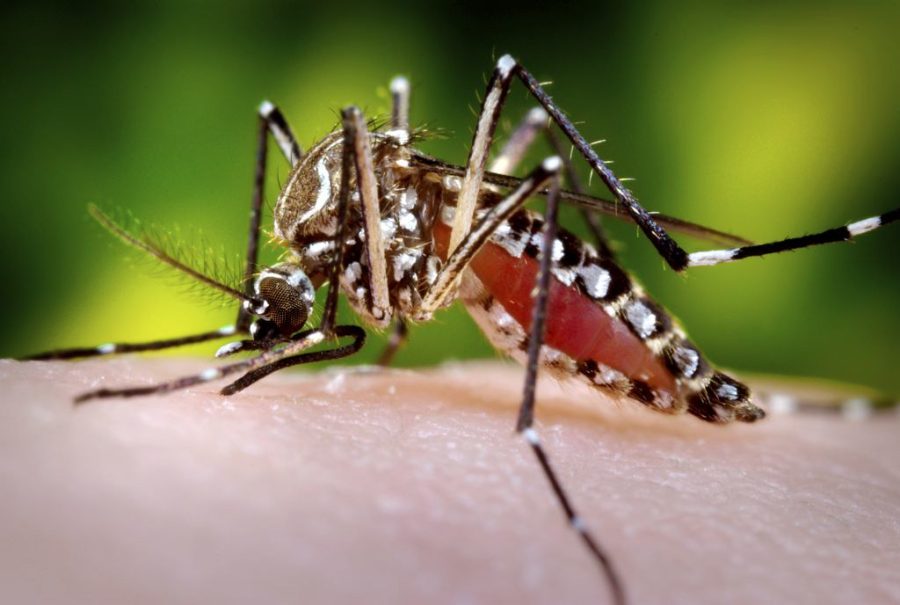New Buzz Alert! Millions of Genetically Engineered Mosquitoes are headed to California
March 23, 2022
The Environmental Protection Agency approved the release of more than 2 billion genetically engineered mosquitoes to California and the Florida Keys
There’s a new insect in town, and it’s buzzing up a swarm of genetically altered male mosquitoes. The Environmental Protection Agency (EPA) approved the release from Oxitec, the biotechnology company that created these mosquitoes, to reduce the number of cases of harmful diseases.
Oxitec is working to reduce the number of transmission of harmful diseases from the Aedes aegypti, an insect that accounts for the largest number of cases of human diseases such as Zika and yellow fever.
It’s important to note that these genetically engineered mosquitoes do not bite or cause harm to humans. They are being released in the wild with the intention that the genetically-induced male mosquitoes will mate with female mosquitoes, and their offspring will never reach maturity.
However, at this time, it is unsure if the offspring of the mosquitoes will function and operate as Oxitiec intends it to. Over time, it is expected that the mosquito population will eventually die out and phase-out of the environment.
One of the concerns is whether this hybrid breed will eradicate the Aedes aegypti mosquitoes and fill their void in the ecological spectrum. These genetically engineered mosquitoes will alter the organisms and regulate the living of insects. It’s unclear how this will affect the mosquito population and the harmful digression of transmitted diseases. Once the mosquitoes are released, there’s no recall.
“Oxitec’s EUP is designed to gather data to determine the efficacy of the OX5034 mosquito at reducing the number of Aedes aegypti mosquitoes. Aedes aegypti mosquitoes, which are among the most common invasive mosquito species in the United States, can transmit diseases such as dengue, Zika, and chikungunya to humans; therefore, mosquito control is important for protecting human health” stated Biopesticides and Pollution Prevention Division, Office of Pesticide Programs, United States Environmental Protection Agency.
These genetically modified mosquitoes will help control pesticides. “Additionally, the use of modified mosquitoes could reduce the use of chemical pesticides for mosquito control,” continued Biopesticides and Pollution Prevention Division, Office of Pesticide Programs, United States Environmental Protection Agency.
Millions of these mosquitoes were released last year in the Florida Keys. Because of this, the EPA has approved an additional release of these mosquitoes in California and Florida. The expansion of this project in the four California counties is pending approval by the state’s regulators. This California launch is expected to be limited to Visalia in Tulare, Fresno, San Bernardino, and Stanislaus Counties.
“Data submitted by Oxitec demonstrate that OX5034 mosquitoes meet Federal Insecticide, Fungicide, and Rodenticide Act (FIFRA) standards of not causing unreasonable adverse effects to humans or the environment. Additionally, the EUP contains significant protections, including weekly monitoring and sampling of the mosquito population. Oxitec has not reported any adverse effects from the field tests that have been conducted in Florida since April 2021,” continued the Biopesticides and Pollution Prevention Division of the Environmental Protection Agency.
As the spring and summer months approach, you may be seeing genetically engineered mosquitoes buzzing right beside you. Don’t fret! Unlike normal mosquitoes, these new mosquitoes don’t bite or harm. They are there as a barrier to protect against the mosquitoes that do bite. So, it’s still important to spray mosquito repellent and apply aloe vera if a mosquito bites you.
“The Florida Department of Agriculture and Consumer Services (FDACS) and the California Department of Pesticide Regulation (CalDPR) must approve testing in their states before additional testing can take place. To learn more about Oxitec’s EUP or EUP amendment, including the protections in place to ensure the EUP meets FIFRA standards, read EPA’s recent announcement or view the supporting materials (e.g., EPA’s risk assessment) in docket EPA-HQ-OPP-2019-0274. To learn more about Oxitec’s initial EUP, watch EPA’s webinar recording, available with English or Spanish subtitles,” concluded EPA.







